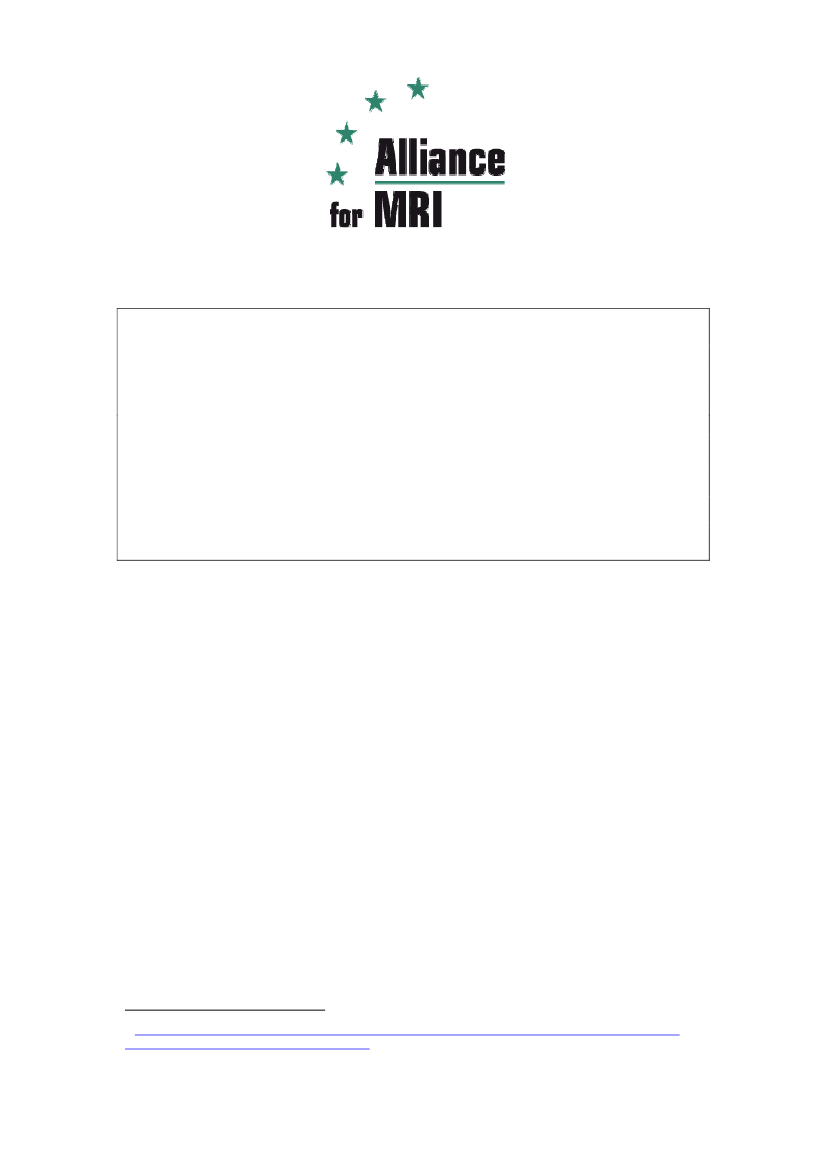
November 2011
The Alliance for MRI welcomes the Commission’s proposal to exempt Magnetic
Resonance Imaging (MRI) from the limit values set in Directive 2004/40/EC to
protect workers from electromagnetic fields (EMF Directive)
This derogation is necessary to ensure the unimpeded use of MRI so that
patients have access to the highest standard of care across Europe.
The safe use of this technology is highly regulated. Criteria have been set to
eliminate any danger to workers and patients.
MRI has been used for over 25 years, imaging up to 500 million patients
without evidence of harm to workers due to exposure to electromagnetic
fields.
The Alliance supports the adoption of guidelines to ensure that working
practices are in line with the latest technological developments.
On 14 June the European Commission adopted a proposal to revise the directive on
protecting workers from electromagnetic fields. The European Commission’s
proposal includes a derogation for the medical and research use of MRI from the
exposure limit values, which will ensure that this vital technology will continue to be
available for all patients.
This revision is a result of the concerns raised by the Alliance for MRI and a
recognition by the European Commission that the current Directive severely curtailed
the use of MRI to the detriment of patients in Europe
1
.
The derogation for MRI is required as the revised exposure limit values still curtail the
use of MRI in areas such as MRI-guided surgery (for example brain surgery) and in
imaging vulnerable patients and children, where closer patient contact is required.
Furthermore, new research and developments in MRI would be severely restricted,
as would routine cleaning and maintenance of MRI equipment.
It is important that the derogation covers all MRI activities, including
clinical use,
research, cleaning and maintenance.
In all those activities workers may be
exposed to one or more of the types of electromagnetic field generated by an MRI
scanner (static magnetic field, switched magnetic field gradients, radio frequency
field) at similar levels as are encountered by healthcare workers when the system is
in clinical use, with the result that the same exemption is
needed.
1
An Investigation into Occupational Exposure to Electromagnetic Fields for Personnel Working With and Around
Medical Magnetic Resonance Imaging Equipment
prepared for DG Employment and Social Affairs, April 2008
1